Rennet Cheese - Haloumi & Ricotta
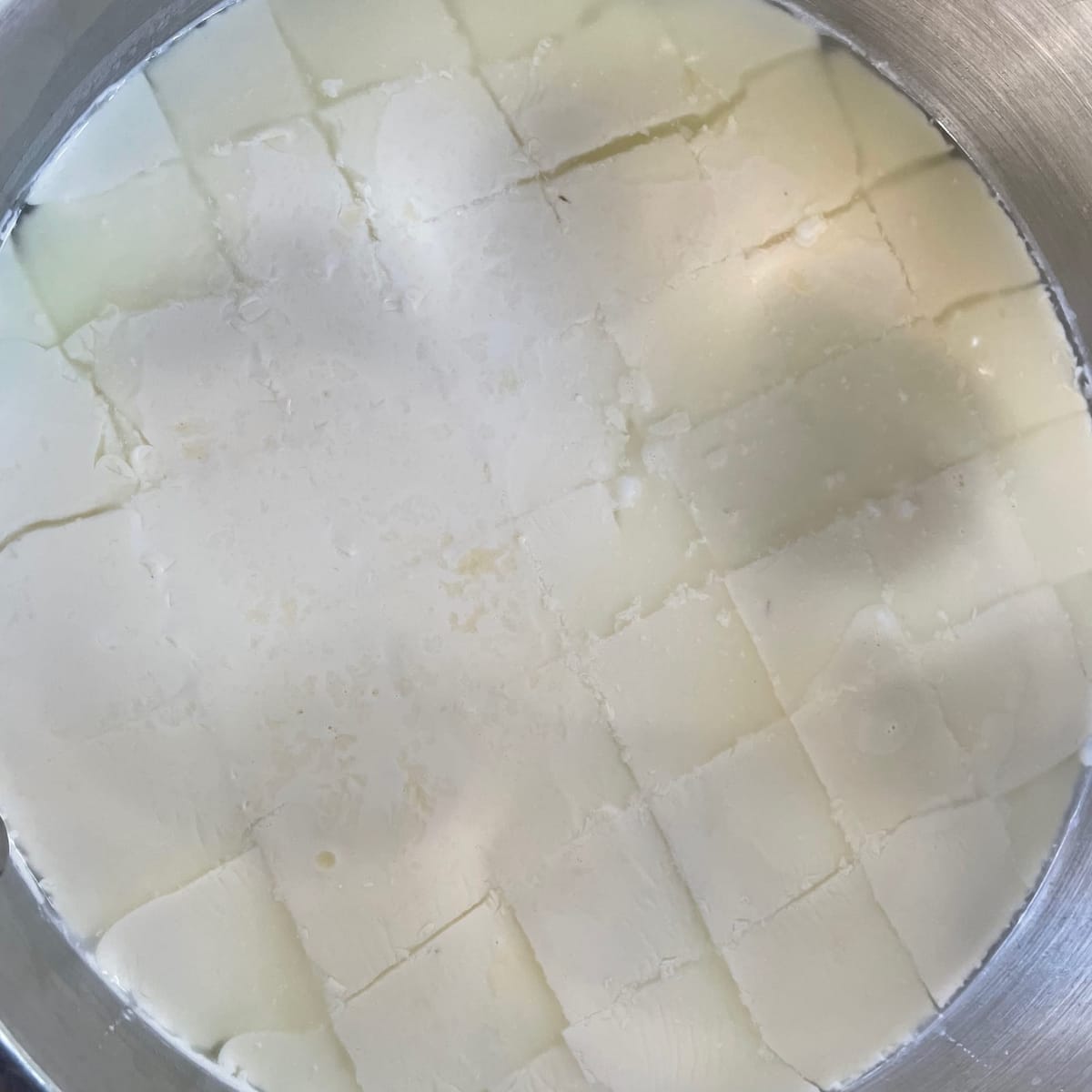
Rennet was originally derived from a cow’s stomach. These days a vegetarian rennet is more common. Rennet produces different smoother curds to other acids and curdles milks at lower temps.
Ingredients
- 4 Litres milk
- ¼ High Strength Rennet Tablet – diluted in ½ cup of non-chlorinated or de-chlorinated water.
- Optional – Fresh or dried mint leaves
- 3 tablespoons (45 ml) sea salt (for Ricotta)
- ½ cup lemon juice (for Ricotta)
Equipment
- Pot for heating milk
- Cheesecloth
- Colander
- Large bowl
- Rubber band, hook or (Optional) a couple of chopping boards and a heavy weights.
- Knife
- Long knife or spatula
- Slotted spoon
- Strainer (for ricotta)
- Kitchen Thermometer (optional)
Method
- Gently heat the milk to bring the temperature to 32-35°C. If you don’t’ have a thermometer than just make the milk slightly warm to touch.
- Dilute the rennet in the water.
- Take the pot off the heat and pour the rennet in the milk and stir gently in an up-down motion so the rennet is evenly distributed.
- Allow the milk to rest for about 50 mins with the lid on, keeping it warm (you may need to gently reheat a little now and again to keep the milk warm) until it sets into curds.
- Once the curd is ready, you will see the milk pull away from the sides of the pot a little. Then cut the curds. Use a long knife or spatula (or your hands) to gently cut the curd into 2cm strips horizontally, then vertically. Then cut diagonally down to make evenly sized pieces as best as possible.
- Slowly bring the heat up to about 38°C-40°C, and let the curds rest with the lid on for about 15 minutes. Gently stir every now and again to keep the curds from sticking to each other and matting.
- Line a colander with cheesecloth and place on top of a large bowl. Use a slotted spoon to carefully scoop out the curds and place them in the colander. Leave the whey in the pot. Gather the curds into a ball.
- Hang the ball from a hook and let it drip into a bowl 45 minutes. Alternatively, use a weight to force moisture out. Place the ball on a sloped surface, and then place a second flat surface on top. Place a weight on top of this surface.
- While the curd is being pressed, heat the whey to 90-95°C but don’t let it boil.
- Once the curds is pressed and the whey is hot, place the curds in the whey for about 45 minutes. Gently stir so the curds don’t stick to the bottom of the pot (but without breaking up the curds).
- When the haloumi rises to the surface, use a slotted spoon to remove.
- Remove the cubes and place in the colander to drain and cool for 20 mins. A little hand pressure will let the curds consolidate. Once it is cool enough to touch you can add salt and/or mint on both sides. After about 15 minutes you can turn them over to make a well consolidated cheese.
- Let the haloumi cool, and absorb the salt for 2 hrs.
- You can fry the haloumi, or store it in the fridge for 3 days or the freezer for 3 months.
- Ricotta: Once the whey cools to 85°C add 1 tsp of salt and 2 tablespoons of lemon juice and keep stirring and heating until the ricotta curds form (keep the temp between 85-92°C. The ricotta shouldn’t take long to form. Once formed, allow them to rest and sit for 10-20 mins. Then scoop out using a strainer. Ricotta is delicate – it is like a cooked egg foam that holds together. Let it drain in the strainer at room temperature until it cools, then store in the fridge for up to 24 hrs.
Photos of the Process:
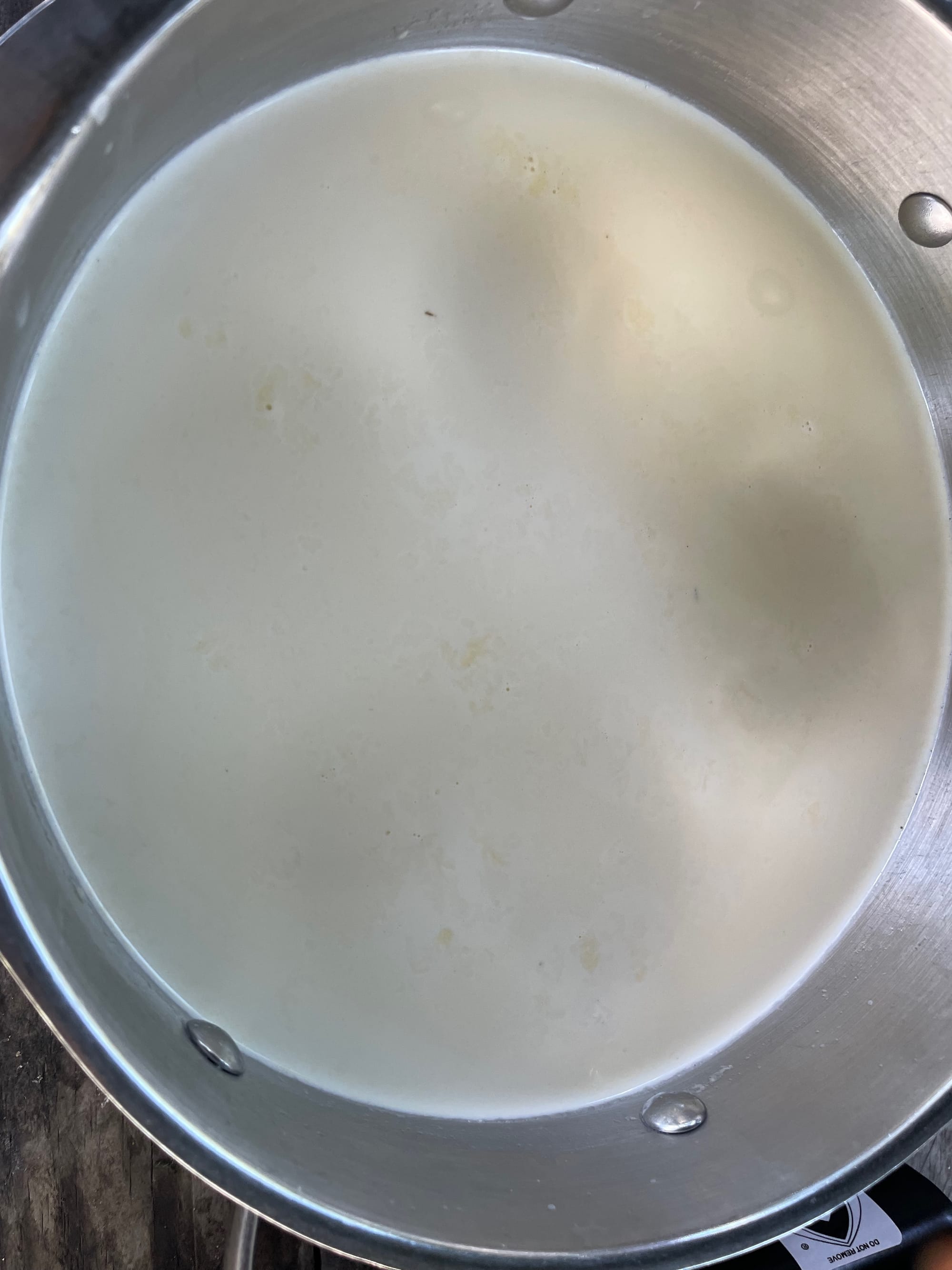
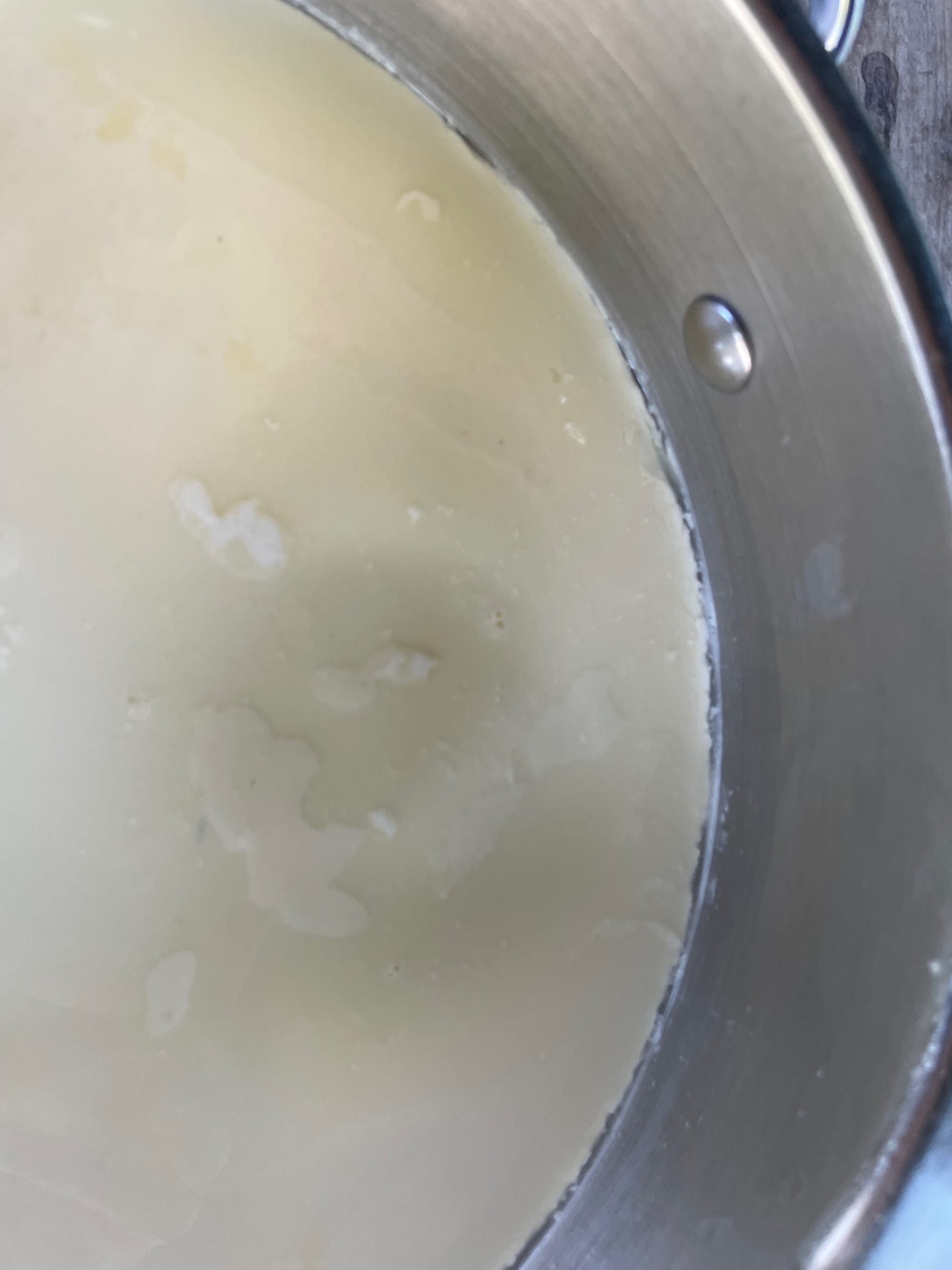
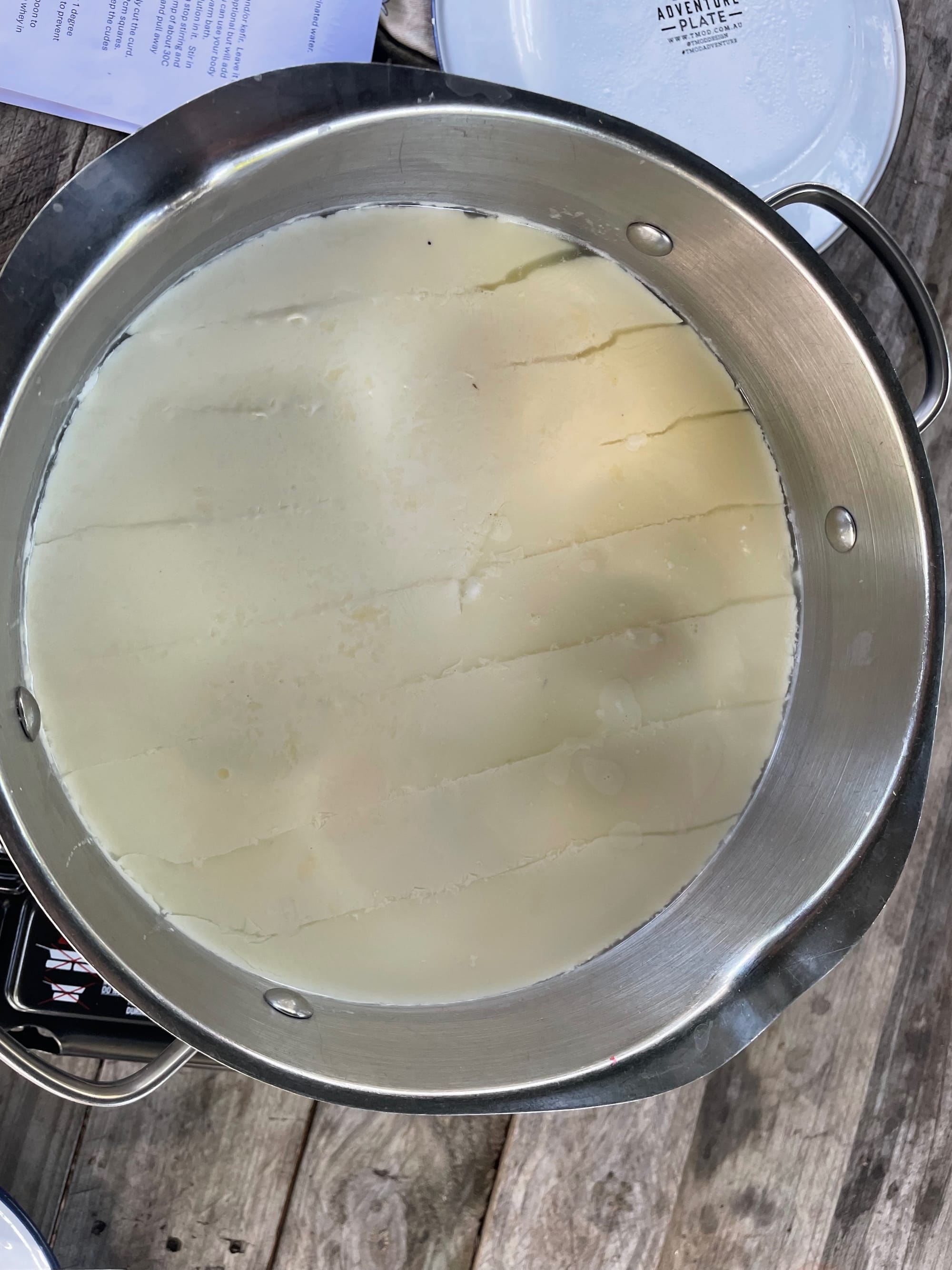
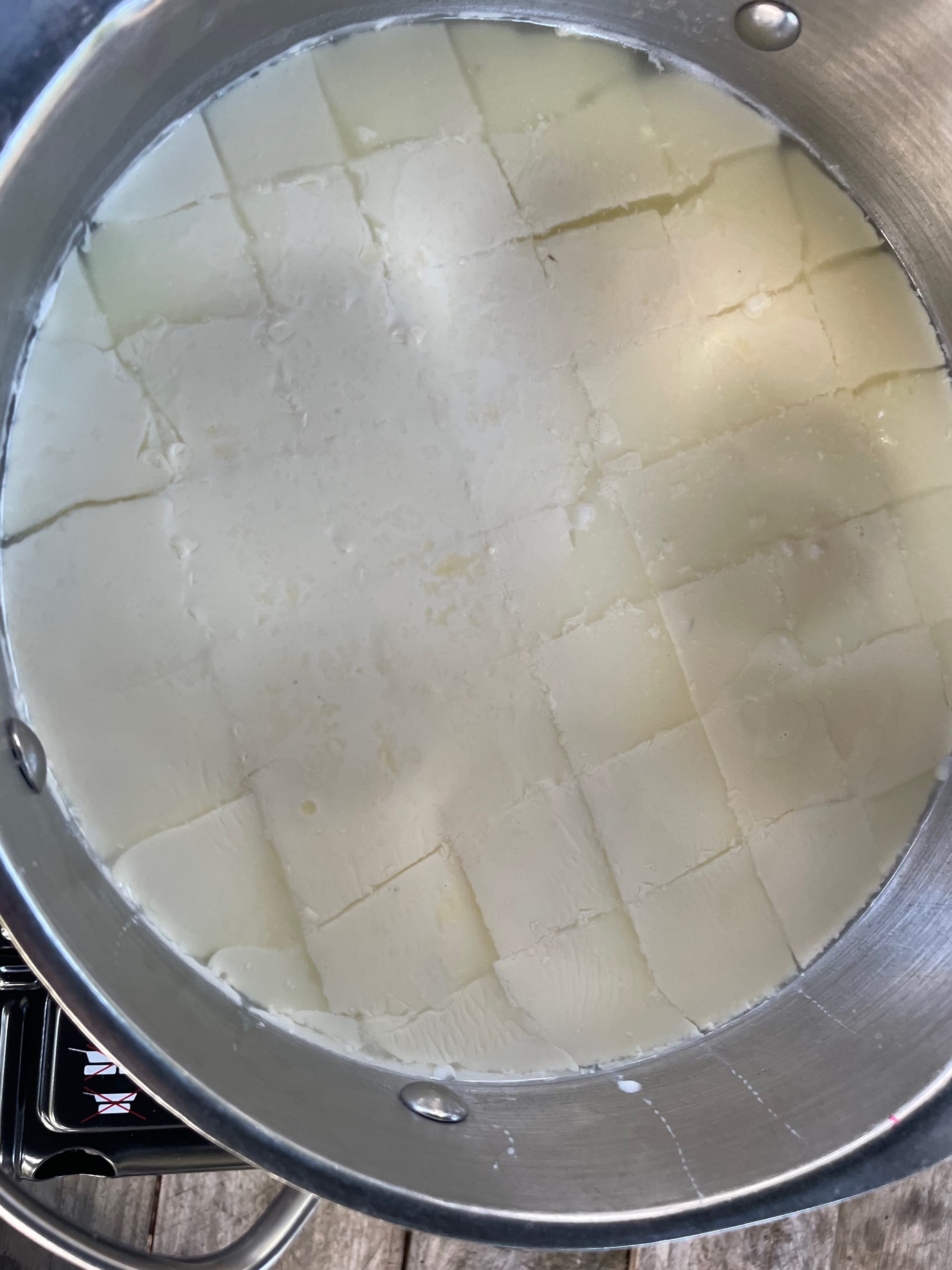
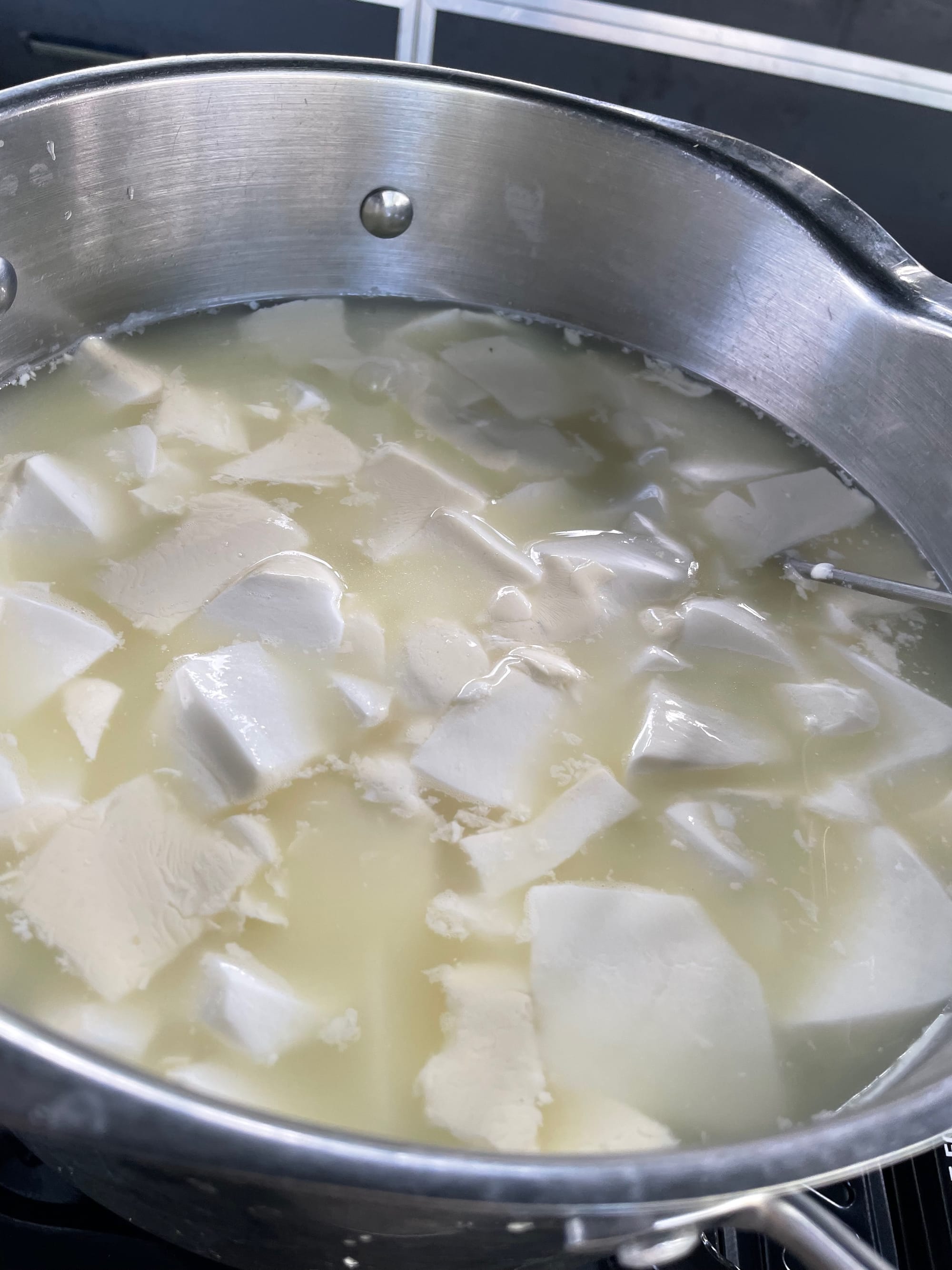
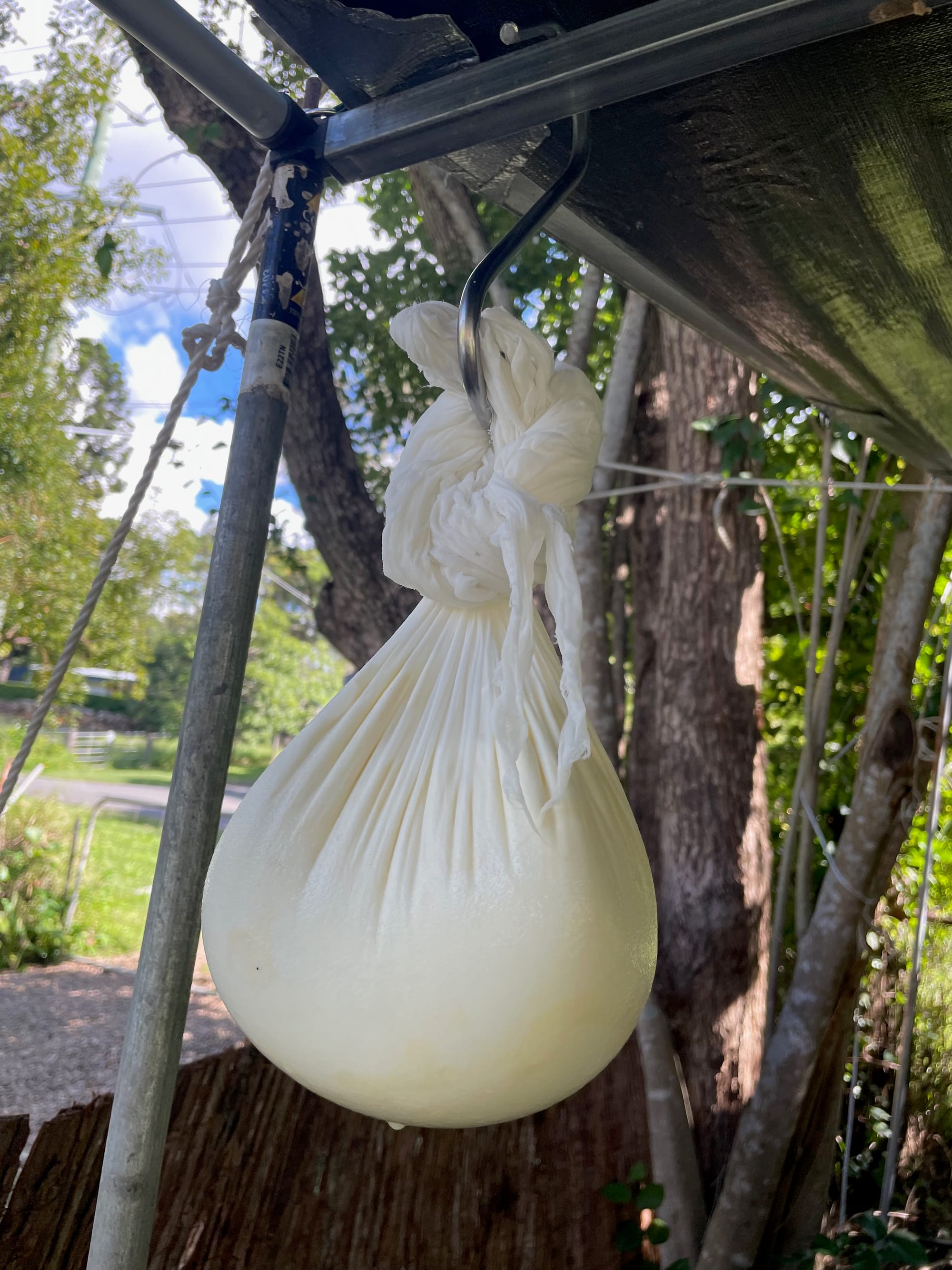
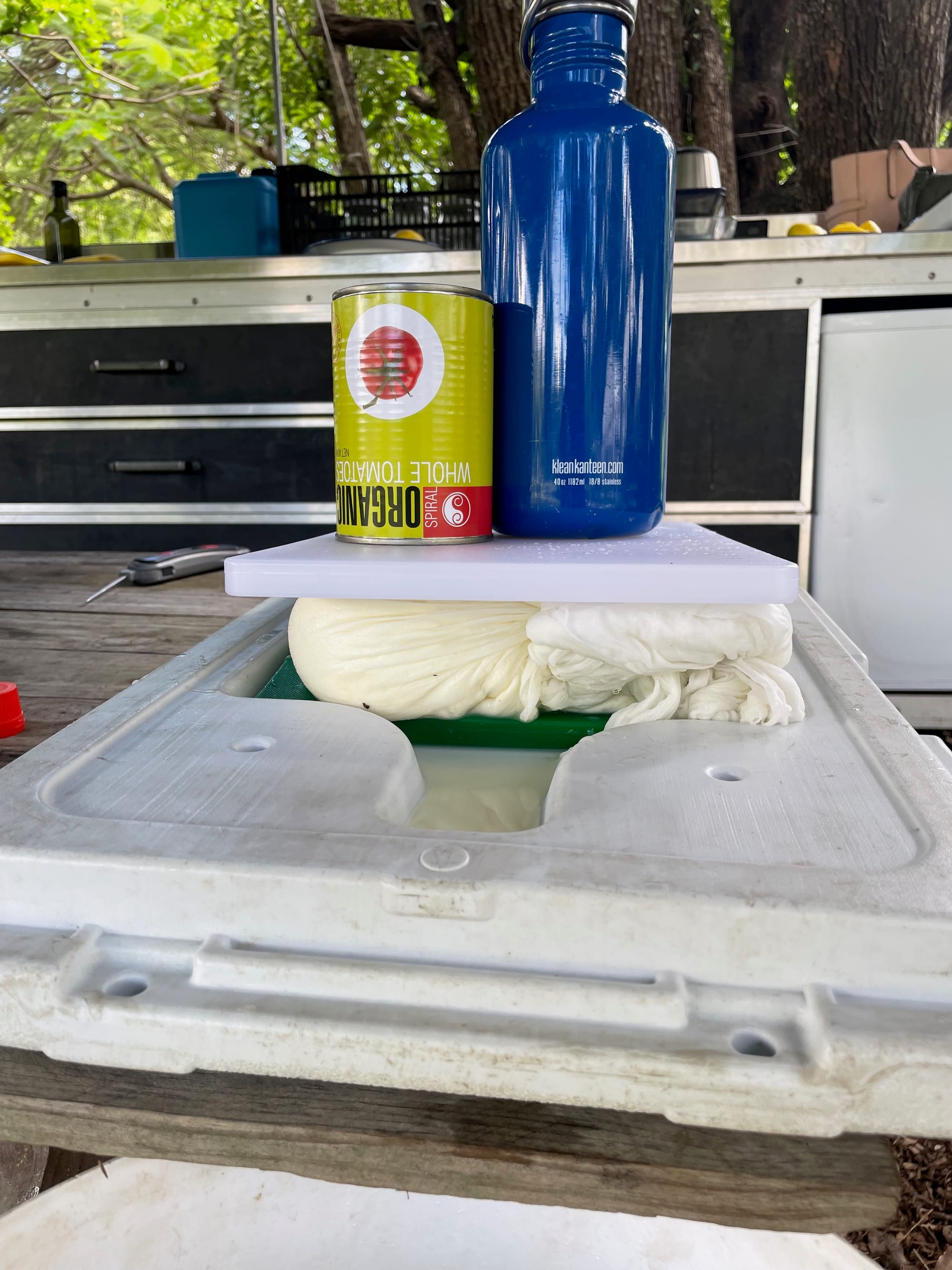
Making the rennet cheese
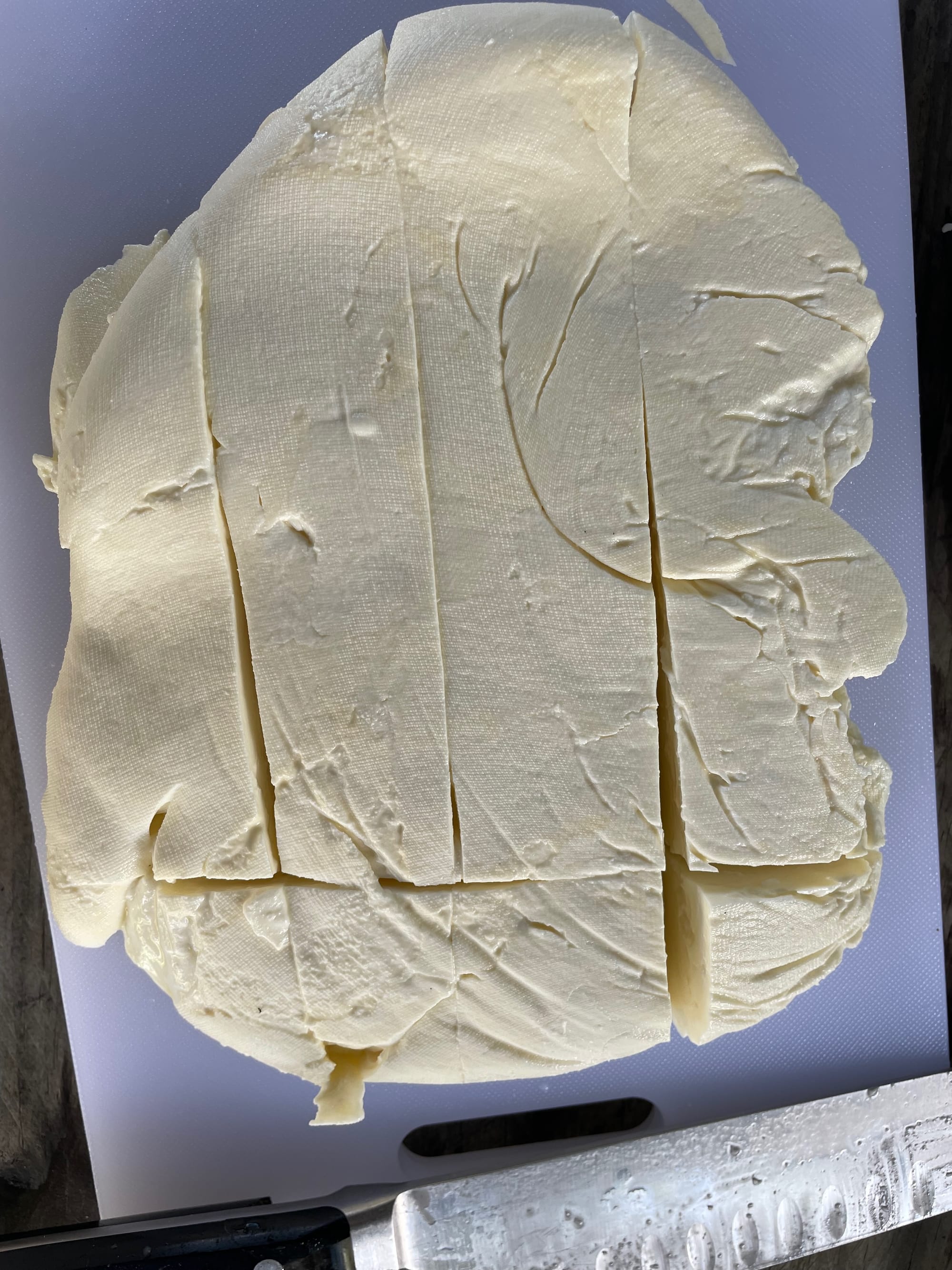
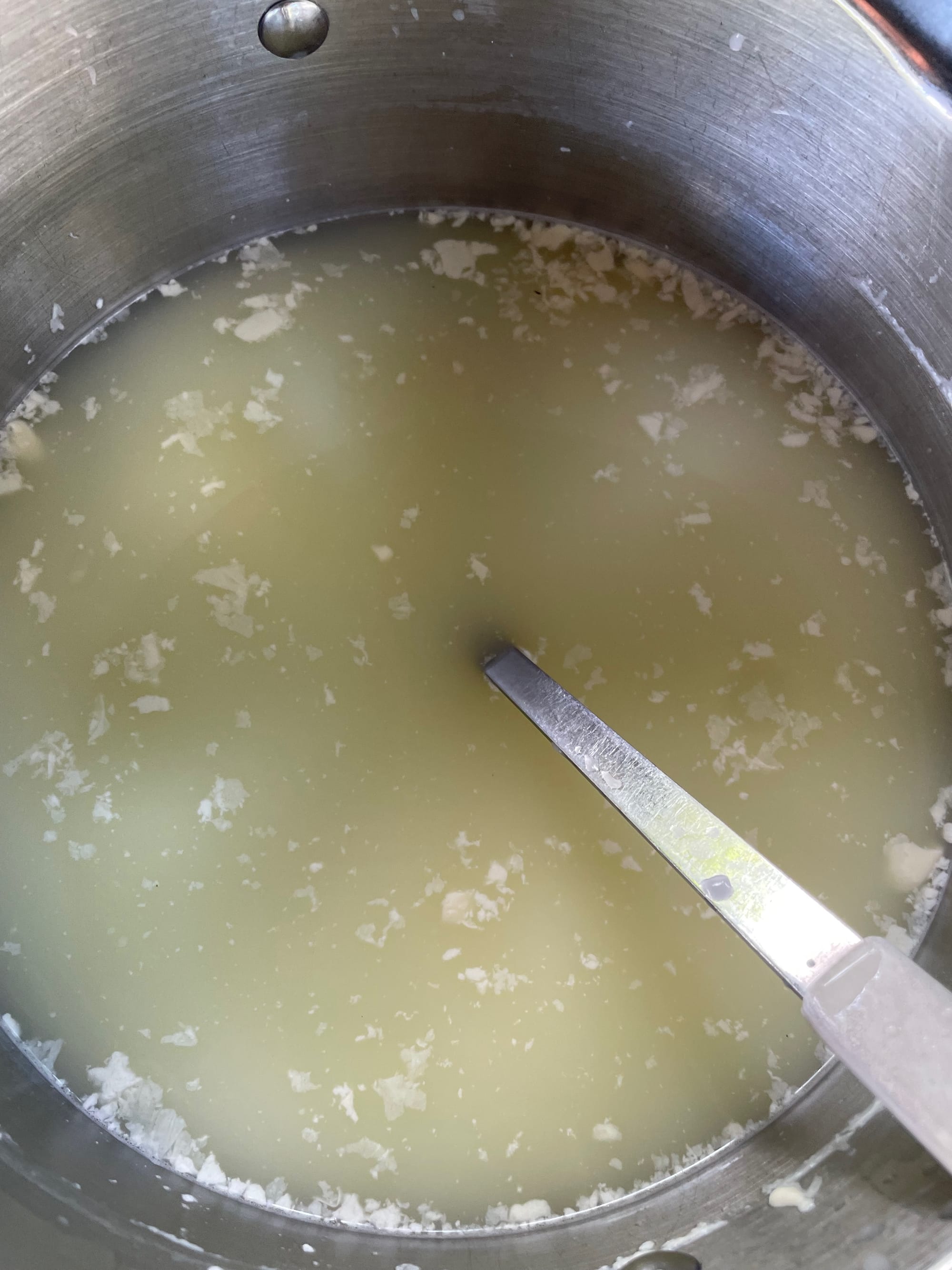
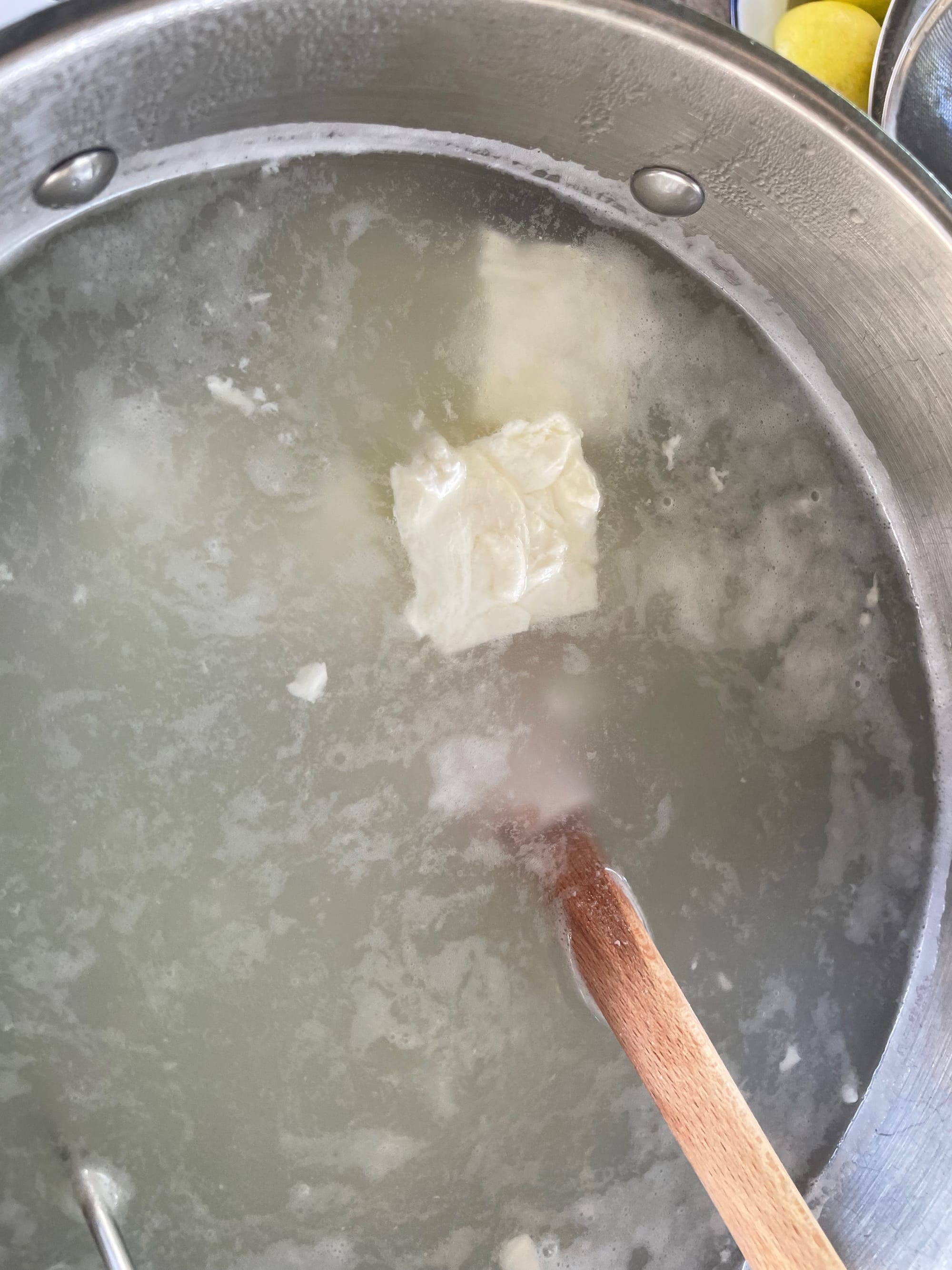
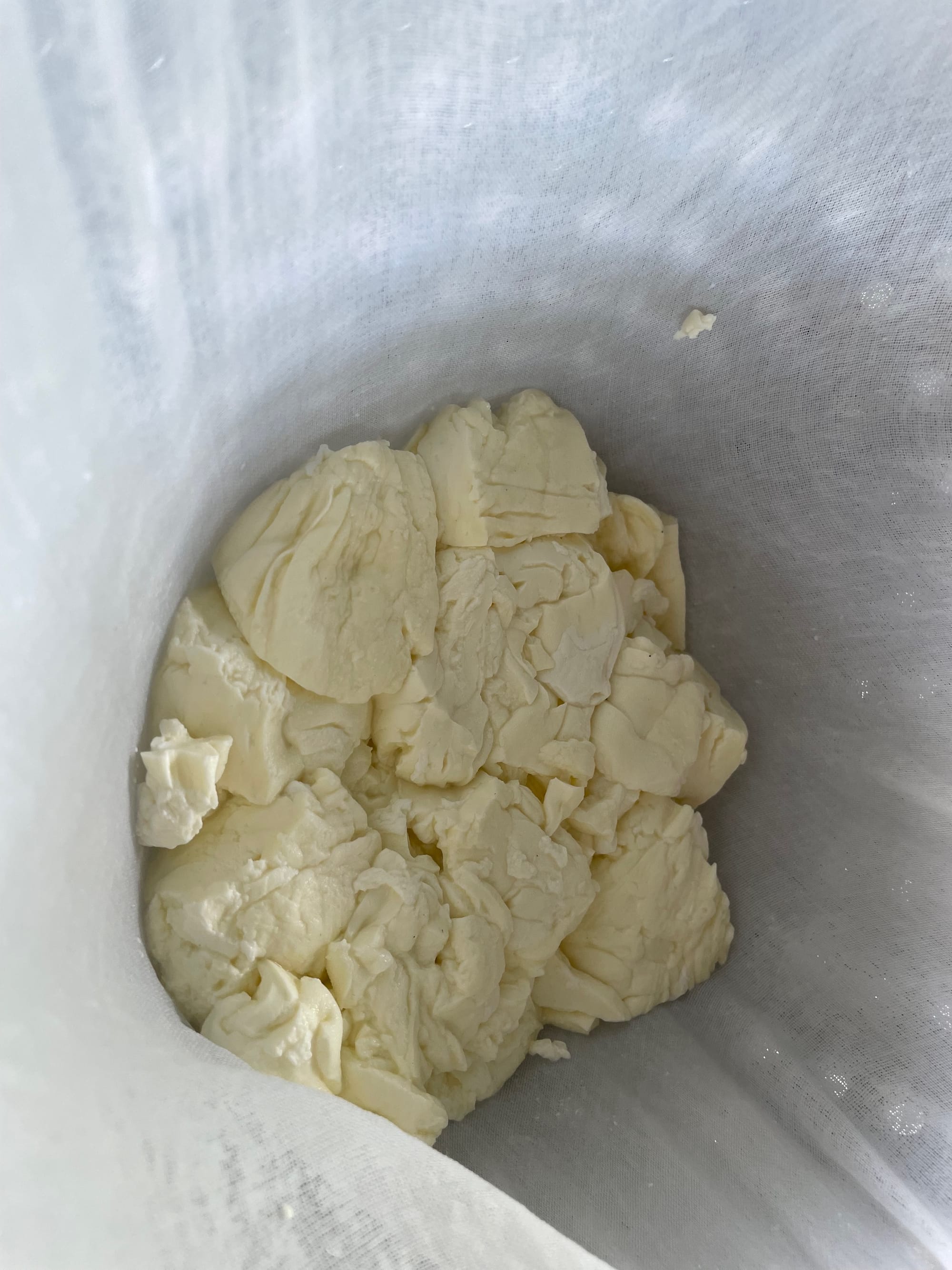
Cooking the rennet curds to make Haloumi
